Accreditation
Canadian Accreditation Process and Criteria
Since its establishment in 1975, CAZA has been at the forefront of developing accreditation standards that are now recognized among the best globally. Domestically, these standards have become a benchmark for excellence in animal care and welfare. Today, governments at all levels have integrated CAZA’s accreditation standards into their regulatory frameworks—either by requiring accreditation for licensing or by referencing them in legislation—reinforcing their importance in ensuring the highest standards of animal welfare and professional excellence.
CAZA’s accreditation program is founded on the principle that zoos and aquariums play a vital role in species conservation and biodiversity. To fulfill this responsibility effectively, they must adhere to the highest standards of animal care, safety, and education. The program ensures that accredited institutions operate with clear conservation strategies and educational objectives, making meaningful contributions to wildlife preservation. As knowledge in animal care, conservation science, and educational best practices has advanced—along with shifting societal values and expectations—CAZA’s accreditation standards have been continuously refined to remain rigorous, relevant, and forward-thinking.
CAZA’s accreditation standards are designed to uphold the highest levels of professionalism in all aspects of zoo and aquarium management. They ensure that CAZA members provide exemplary care for the animals entrusted to them while fostering safe, high-quality educational experiences for the millions of visitors who explore CAZA-accredited facilities each year. Through these rigorous standards, CAZA reinforces its commitment to animal welfare, public engagement, and excellence in conservation education.
At the heart of the accreditation process are four key pillars:
- Excellence in Animal Welfare – Ensuring the highest standards of care and well-being for all animals.
- Conservation – Advancing efforts to protect and preserve wildlife and their habitats.
- Education & Engagement – Inspiring and educating the public about conservation through meaningful experiences.
- Safety – Prioritizing the well-being of animals, guests, and staff in all aspects of operations.
How it Works
Any institution who maintains exotic animals under the care of professional animal care staff can apply to become a member of the association. It is in an institution's best interest to review the CAZA process guide and CAZA standards in advance of applying. If you have questions regarding the process, please email [email protected]
- Expression of Interest – Initial contact with CAZA to assess eligibility for accreditation.
- Assessment – CAZA National Office reviews applications of interest and determines eligibility. Then the Accreditation team will reach out to set-up a call to review your eligibility and answer questions.
- Mentorship Program (Optional but Recommended) – First-time applicants are strongly encouraged to participate in the CAZA Accreditation Mentorship Pathway (CAMP) Program for guidance and support.
- Formal Application Submission – Submission of the official application for CAZA membership and accreditation consideration.
- Evaluation & Inspection – A comprehensive assessment, including on-site inspections, to ensure compliance with CAZA’s accreditation standards.
- Accreditation Decision – Review of evaluation results and determination of accreditation status.
Applications for new institutional members and renewals for existing association members are due with all corresponding documents by March 31 of the calendar year.
CAZA accredited inspections are conducted between the application deadline and the annual national conference. The accreditation commission who is responsible for determining accreditation success meets in advance of the annual national conference to assess all accreditation applications and inspections.
Accreditation documents are available in our CAZA member’s portal. If you are not a CAZA member, and have inquiries related to our accreditation process, please contact our membership team at [email protected].
Role / Purpose
To establish, maintain and raise standards of operation in the Canadian Zoo and Aquarium community through a process of self evaluation, on site inspections, and peer review.
Join the CAZA Accredited Community
Ready to take the next step? If your institution is committed to excellence in animal care, education, and conservation, we invite you to begin your journey toward CAZA accreditation and join a nationally recognized community of trusted zoos and aquariums.



